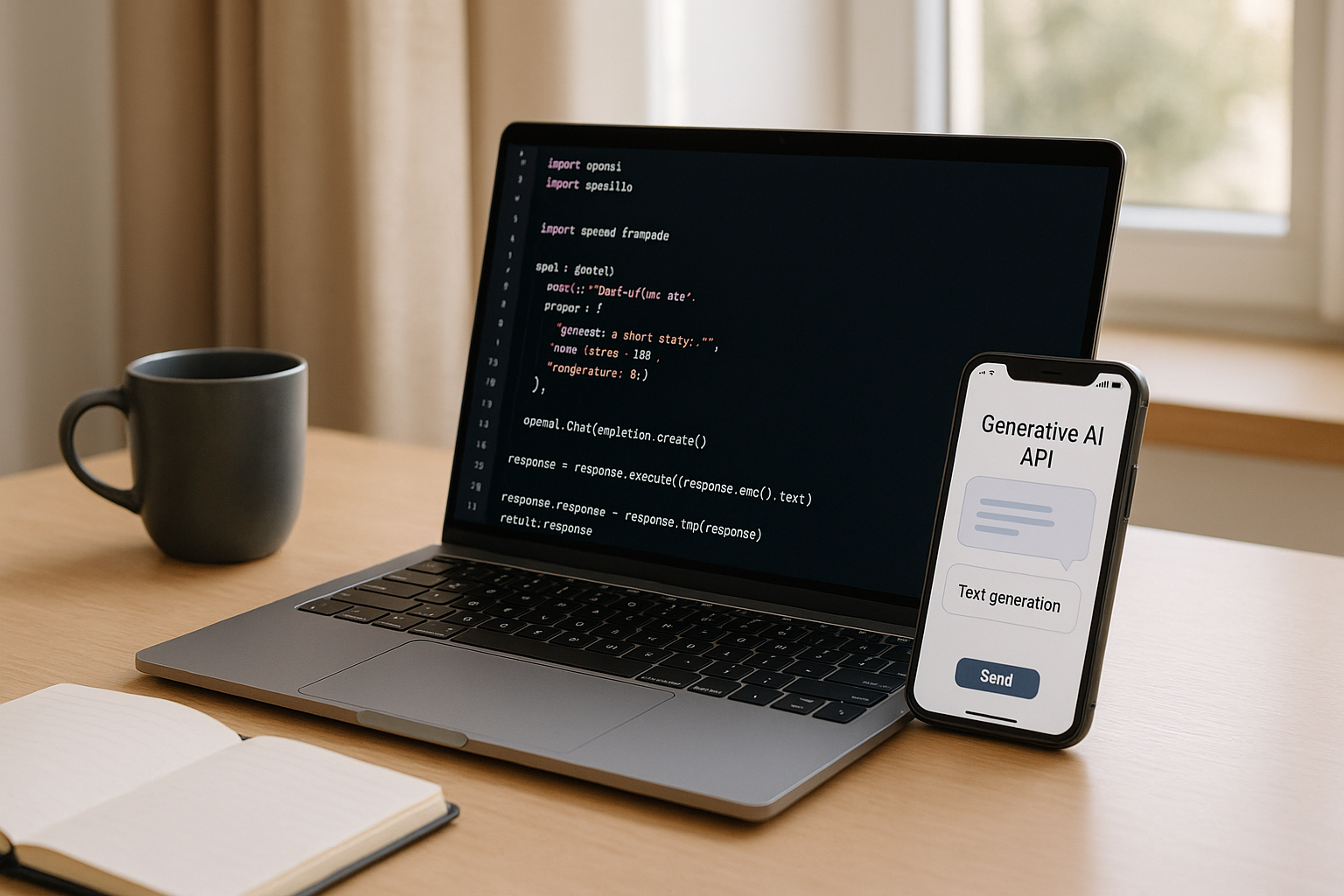
In today's fast-evolving technological landscape, generative AI is no longer just a futuristic concept - it’s an essential tool for businesses seeking to stay competitive. From creating conversational chatbots to automating workflows and providing personalized customer experiences, integrating generative AI APIs into your applications can revolutionize your business operations.
This article unpacks the intricacies of integrating generative AI APIs, drawing insights from the video content and offering actionable steps to get started. Whether you’re a business owner, tech-savvy decision-maker, or developer working on a minimum viable product (MVP), this guide is tailored to equip you with the knowledge needed to harness the power of generative AI.
Generative AI, powered by models like OpenAI’s GPT series, enhances efficiency by automating processes that traditionally required significant human input. For industries like real estate, law, healthcare, SaaS, and hospitality, this technology can:
Integrating generative AI APIs into applications brings these benefits to life, allowing businesses to build customized solutions tailored to their specific needs.
The video highlighted key steps for embedding generative AI capabilities into your applications. Below is a structured approach to guide you through the process:
The first step is selecting the API that aligns with your requirements. OpenAI’s GPT models, for example, are versatile and widely used for tasks such as text generation, summarization, and conversation automation. Key considerations include:
APIs require secure access, and an API key acts as your unique identifier. To set this up:
To start simple, many developers create a basic interface using HTML. This serves as a front-end for experimenting with API calls and responses. For example:
Understanding how to call the API is crucial. Most APIs use RESTful endpoints, and requests can be made via HTTP. In the video, JavaScript was used as an example:
Generative AI models allow you to customize how they behave. Key adjustable parameters include:
Before deploying your application, run extensive tests to ensure the AI performs as expected. Look for:
Once testing is complete, integrate the API into your larger application framework. Consider cloud hosting solutions to ensure scalability, and monitor usage to optimize performance and costs.
While generative AI APIs offer immense potential, businesses should be aware of the challenges involved:
API usage typically incurs costs based on the number of tokens processed. To manage costs:
Many applications handle sensitive data, particularly in industries like healthcare and law. Ensure that:
Generative AI is not perfect and may generate inaccurate or inappropriate outputs. To mitigate this:
To ensure smooth adoption:
For professionals seeking to integrate generative AI APIs into their applications, the following points will help streamline the process:
By following these steps and best practices, businesses can unlock the transformative potential of generative AI, creating innovative solutions that drive growth and efficiency.
Generative AI APIs represent a powerful tool for modern businesses, enabling them to create smarter applications, enhance user experiences, and optimize operations. By taking a methodical approach to integration, professionals across industries can effectively leverage this technology to meet their unique needs.
The process may seem complex at first, but with careful planning and iterative development, integrating generative AI can become a seamless and rewarding endeavor. Whether you’re building an MVP or enhancing an established application, now is the time to explore how generative AI can elevate your business strategy.
Source: "Integrating AI into Your Apps A Developer's Guide to Generative AI APIs | Hany Saad | DSC MENA 25" - Data Science Conference, YouTube, Aug 20, 2025 - https://www.youtube.com/watch?v=8XVsxtoj5fs

.png)
